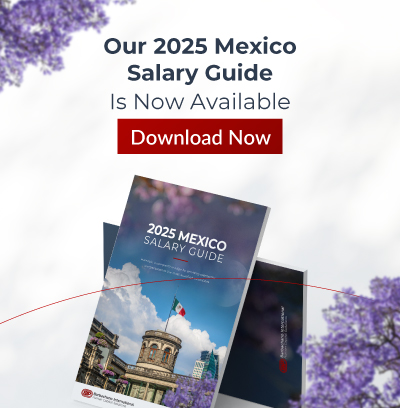
Leaders Don’t Change Organizations, They Transform Them
In today’s fast-moving business world driven by constantly evolving technology, doing more of the same is a recipe for disaster. Over the past twenty years, more than 50% of Fortune 500 companies have been acquired, merged, or declared bankruptcy. Organizations face bigger threats—and from a wider range of competitors—than ever before.
How do you stay on top? Almost invariably, corporate transformations are initiated and propelled by their leaders. Transformational leaders, individually, are engines of massive change.
What are the characteristics of transformational leaders?
Transformational leadership is about the people in the organization and how you interact with them. Transformational leaders influence the people in the organization, thereby planting seeds of change. People who lead from a transformational approach are “we-centered” according to author Judith Glasser.
Most researchers have similar perspectives on the characteristics of transformational leaders. In Reinventing Leadership, Bennis and Townsend talk about ACE: acknowledge, create, and empower. These are the behaviors of a transformational leader. Transformational leaders allow their people to take risks, make mistakes, and then put lessons learned to work for the organization.
Max De Pree, in Leadership Is an Art, emphasized that it is the relationships between leaders and their followers that is the key to successful organizations. Max opens the chapter on leadership with these statements, “The first responsibility of a leader is to define reality. The last is to say thank you. These two statements sum up the characteristics of a transformational leader.
According to Stephen Covey in Principle – Centered Leadership, another word for transforming is reinvention. Furthermore, he argues that this reinvention begins with the individual. Transformational leaders are able to adapt themselves to the organization’s characteristics and begin changes from within.
How is transformation different from change?
Change is part of transformation. One way to understand transformation is to think about the ingredients in a peanut butter cookie. There are peanuts, peanut butter, flour, butter which began as cow’s milk, sugar, and some other ingredients.
When you follow the recipe for peanut butter cookies, the ingredients combine to create something new. You could not get the same experience of eating that peanut butter cookie by individually consuming the cookie’s ingredients.
Transactional leadership theory versus transformational leadership theory
Transactional leadership is about bargaining. At its most basic, interactions are seen as a negotiation between parties: if you do X, then I will do Y. Leaders who favor a transactional style are apt to use rewards and punishments. Stephen Covey (1991) argued that transactional leaders focused on changing the environment to suit their individual desires, focused on the bottom line, and were event centered.
CEOs who transformed their organizations
Here are six CEOs, alphabetically arranged, who inherited less than stellar conditions. They shared their visions for a better world, inspired their followers, and acted as role models.
Ginny Rometty of IBM. Rometty took over from Sam Palmisano at a time when IBM was mired in unprofitable business lines. She and the people that she inspired to follow her have reinvented IBM from a company that focused on hardware and computer operating systems to a company that helps its customers enter the future of computing in virtual environments.
Jack Welch of General Electric. Welch inherited a company mired in bureaucracy. He envisioned a lean organization with an informal workplace climate and made stock options available to more employees. His vision of being either first or second in an industry helped him transform GE from a manufacturer into a financial services company.
Lee Iacocca of Chrysler. Chrysler was on the verge of going out of business when Iacocca joined the organization. He rebuilt the company from the frontline to the executive suite. To demonstrate his commitment to the massive changes required to resuscitate Chrysler, Iacocca slashed his salary to one dollar per year.
Meg Whitman of Hewlett-Packard. Whitman took over Hewlett-Packard at a time when it was confused about its identity and its future. During her tenure, HP was split into two separate companies, one company focused on computer and printer businesses and the other company focused on technology services.
Oprah Winfrey of Oprah, Inc. Winfrey reimagined the role of women in media. She leveraged her experience as a news anchor and morning talk show host to create a format now used by many modern talk shows. Forbes has named her one of the 100 most influential women in the world.
Steve Jobs of Apple, Inc. Jobs returned to Apple when it merged with NeXT. Apple had been on the verge of bankruptcy. Jobs’ focus on customer experience and powerful computing devices with appealing designs helped turn the company around. While noted as a perfectionist, Jobs also possessed the ability to inspire his followers to reach beyond what they thought possible.
Can you develop transformational leadership skills?
It’s a good bet that if you’re wondering if you can develop transformational leadership skills, you have what it takes to be a transformational leader. You are looking for knowledge, skills, and resources. You’re open to change. There is a brief 8-question test by Dr. Ronald E. Riggio that you can take to get started on your own transformational journey.
Will you be able to save this organization? Yes. How? By reaching out to the people at all levels, sharing your vision, and acting as a role model for the future that you see so clearly. Inspire them and they will inspire you.
Get in Touch with an Expert
At Barbachano International, we understand how important these human resource issues are for companies that operate globally. Feel free to contact us or visit our blog.

President and CEO of Barbachano International (BIP), the premier executive search and leadership advisory firm in the Americas (USA, Mexico, Latin America, & Canada) with a focus on diversity and multicultural target markets. Since 1992, BIP and its affiliates have served over 50% of Fortune 500 Companies and have been recognized by Forbes as a Top 40 executive search firm. We are member-owners of NPAworldwide – the recruiting network with allied offices in over 50 countries. Outplacement and Executive Coaching services are provided by our sister company Challenger Gray & Christmas.


